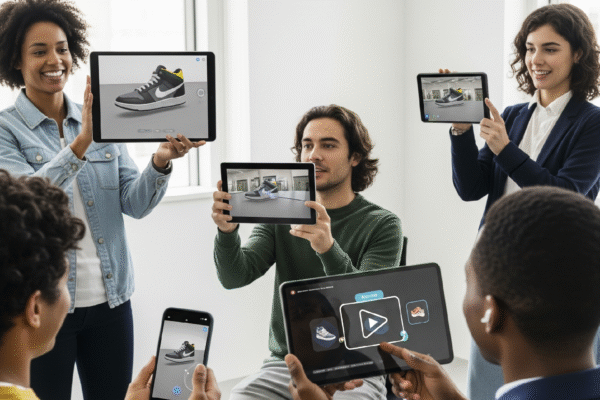
Micro-Influencers vs. Mega-Influencers: A Data-Driven Guide for Brands
In a world saturated with digital noise, brands are constantly looking for more human, relatable, and impactful ways to reach their audience. One powerful way they’ve discovered? Influencer marketing. But as this strategy matures, a question keeps resurfacing: should your brand invest in micro-influencers or mega-influencers?
Both have their merits, and both can yield impressive results when aligned with your brand’s goals. However, choosing the right influencer tier can be the difference between wasted spending and powerful ROI. This article breaks it all down emotionally, practically, and strategically so you can make the best choice for your brand.
Who Are Micro- and Mega-Influencers?
Micro-influencers typically have between 1,000 and 100,000 followers. They are everyday individuals who’ve cultivated a loyal, engaged audience in a niche: beauty, tech, parenting, fitness, education, finance, or even meme culture.
Mega-influencers, on the other hand, have over 1 million followers. These are celebrities, public figures, or internet personalities with vast reach, fame, and wide audience appeal.
The Emotional Edge: Why Trust Matters
One key difference between micro- and mega-influencers is trust. In today’s skeptical world, people don’t just want to be sold to; they want to feel something. They want a real voice they can relate to. Micro-influencers offer that. Their smaller audience sizes often mean higher engagement rates and more authentic interactions.
Imagine a local skincare enthusiast who shares honest reviews with 15,000 followers. When she posts about a moisturizer, it feels personal. Her audience knows her routines, struggles with acne, and what works for her. That recommendation feels like it’s coming from a friend.
Now picture a mega-influencer, perhaps a TV star, posting the same product with a polished photo and perfect lighting. It might spark awareness, but will it spark trust? For many consumers, probably not.
Data Doesn’t Lie: Engagement vs. Reach
Let’s look at the numbers:
- Micro-influencers tend to have an average engagement rate of 6% or higher.
- Mega-influencers often see engagement rates of 1.5% or lower.
Why? Because micro-influencers often respond to comments, create interactive stories, and maintain a sense of community. Their audiences listen and care.
But it’s not just about engagement. Mega-influencers shine when mass awareness is the goal. Their posts can reach millions in one go; ideal for massive product launches, viral campaigns, or global brand awareness.
Cost Comparison: Budget vs. Value
Influencer marketing doesn’t come cheap. Here’s a rough idea of average costs:
- Micro-influencer (10k – 50k followers): $100 – $500 per post
- Mega-influencer (1M+ followers): $10,000 – $100,000+ per post
If you’re a startup or small brand with a modest marketing budget, you could work with 10–20 micro-influencers for the price of one mega deal. And if chosen wisely, those micro partnerships might lead to better overall engagement and conversions.
That said, if your brand has the cash and wants to make a big splash (say, launching a new phone or Netflix series), the mega route could be justified.
Niche Targeting vs. Mass Appeal
Another crucial difference lies in audience specificity. Micro-influencers are usually niche experts. Their followers share specific interests and identities. This is gold for targeted marketing.
Let’s say you’re promoting a vegan protein shake. A micro-influencer who’s a plant-based fitness coach speaks directly to your ideal audience. His or her endorsement is precise, contextual, and persuasive.
Mega-influencers, however, have diverse and often unsegmented audiences. That vegan protein ad may reach millions, but a large percentage might be uninterested, or worse, completely unqualified leads.
Storytelling and Content Quality
Mega-influencers often have access to professional content teams, resulting in visually stunning posts. They know how to sell a lifestyle. Their content is high-quality, slick, and shareable.
Micro-influencers, while less polished, deliver raw and relatable stories. They invite followers into their personal lives, making product promotion feel natural rather than scripted. Their storytelling tends to perform well on platforms like TikTok and Instagram Stories, where authenticity wins.
In fact, many brands now repurpose content from micro-influencers for ads and email marketing because it performs better than agency-created content.
Brand Safety & Reputation Risk
Mega-influencers live under a spotlight. Their every move is public. One wrong tweet, scandal, or PR incident can damage your brand’s reputation if you’re associated with them.
Micro-influencers, with their smaller profiles, face less scrutiny and fewer PR risks. And because they’re often passionate about their niche, they’re more likely to respect partnerships and stay brand-aligned.
Real Case Studies
Case 1: Daniel Wellington (Watch Brand) This brand built a global empire using thousands of micro-influencers, rather than celebrities. Each influencer received a free watch and a discount code to share. This grassroots strategy created viral visibility and trust simultaneously.
Case 2: Pepsi’s Kendall Jenner Ad (Mega Influencer Misfire) In contrast, Pepsi’s 2017 ad starring Kendall Jenner (a mega-influencer) sparked backlash for trivializing social movements. The reach was huge, but the backlash outweighed the benefits.
Which Should Your Brand Choose?
There’s no one-size-fits-all. Your decision depends on:
- Your Budget: Smaller budgets benefit from multiple micro-influencers.
- Your Goals: Want awareness? Go mega. Want conversions or community? Go micro.
- Your Product Type: Niche products = niche audiences = micro.
- Your Brand Voice: Polished and aspirational = mega. Relatable and grassroots = micro.
Hybrid strategies; using a mix of micro, mid-tier, and mega influencers are becoming more common. A mega post may create buzz, while a fleet of micro-influencers builds long-term trust.
The Future: Why Micro-Influencers Are Rising
As audiences grow more aware of paid promotions, trust and relatability will matter more. People crave human connection. They want reviews, not rehearsals. In this environment, micro-influencers will thrive.
In fact, many mega-influencers are losing engagement, while micro and nano influencers (under 10k followers) are gaining momentum. Brands that recognize this shift early will have a competitive advantage.
Final Verdict: It’s Not About Size, It’s About Fit
At the heart of it, your brand needs connection, not just coverage. It needs storytelling, not just stardom. And most of all, it needs influencers who care about your mission and your audience.
So, when deciding between micro-influencers and mega-influencers, ask not who has the bigger following. Ask who can deliver the most genuine impact.
After all, in the digital age, trust is the new currency and the right influencer is your best investment.




